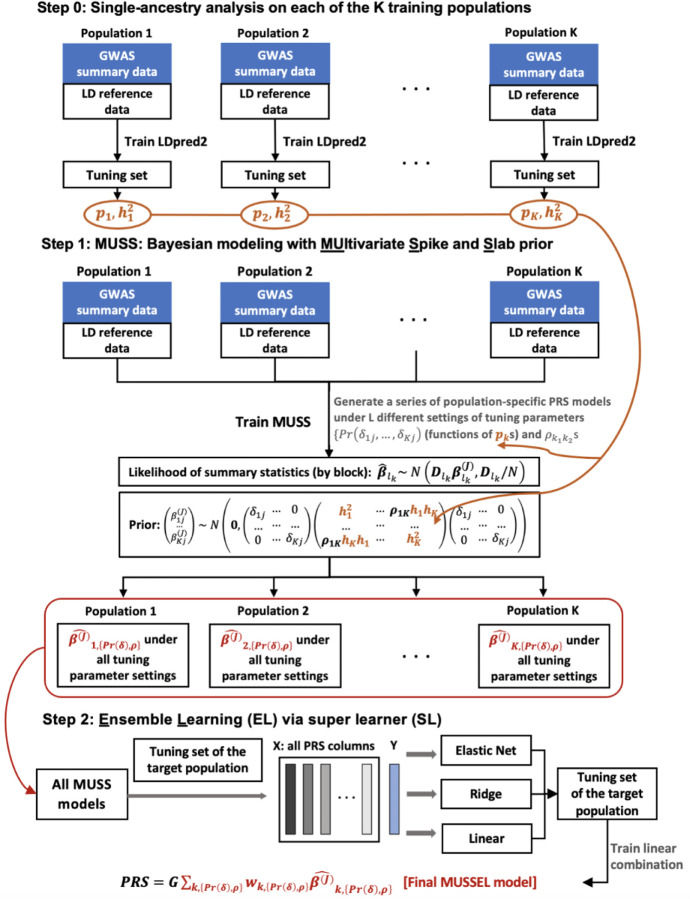Figure 1: MUSSEL Workflow.
[Step 0] apply LDpred2 to each of the K training populations (ancestry groups) to obtain estimated causal SNP proportions (, ) and heritability (, ) parameters based on the tuning set, these parameters will be used to specify the prior distributions and tuning parameter settings for Bayesian learning with MUSS. [Step 1] MUSS: jointly model across all training populations to obtain a total of () PRS models under L different tuning parameter settings for (functions of ) and across training populations. [Step 2] for the target population, conduct ensemble learning (EL) via a super learner (SL) algorithm with 3 base learners (elastic net regression, ridge regression, and linear regression) to train an “optimal” linear combination of the () PRS models from the MUSS step to obtain the final MUSSEL model. The prediction performance of the final PRS derived using MUSSEL should be evaluated on an independent testing set.

